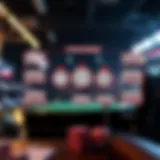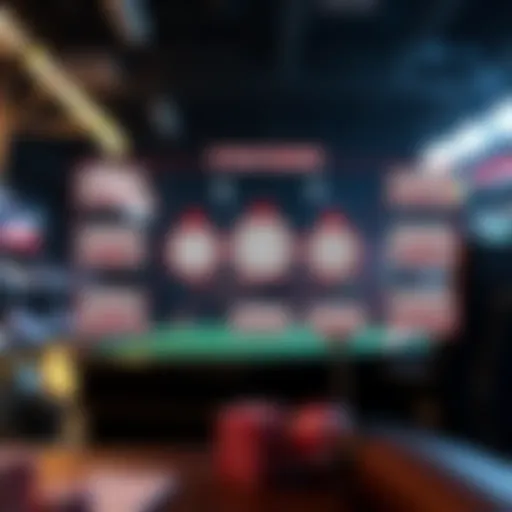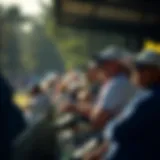Exploring Tarot Card Reading in NYC: An In-Depth Examination
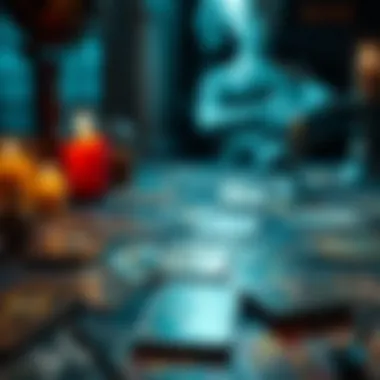
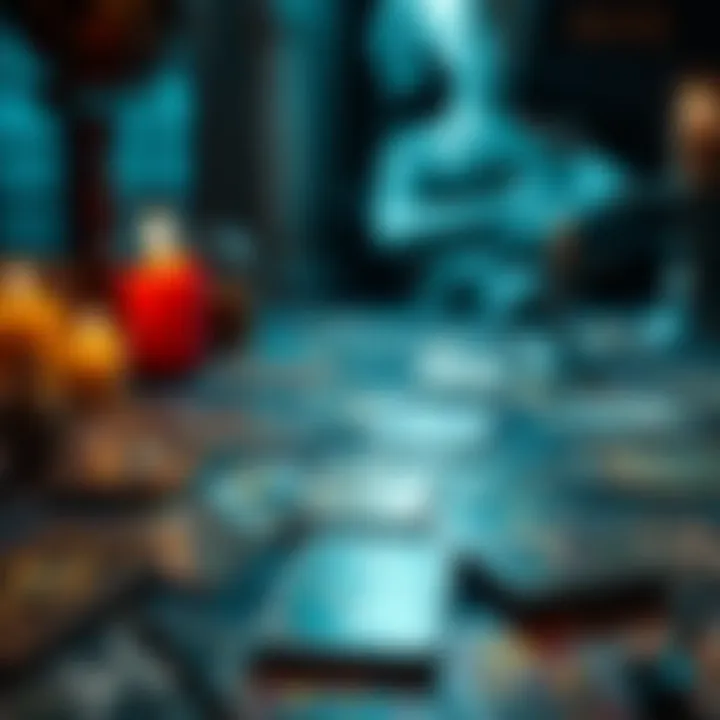
Intro
Tarot card reading is more than just a novelty or a trendy pastime; it is an intricate tapestry woven from history, culture, and individual beliefs. In the bustling heart of New York City, the art of tarot reflects a microcosm of society’s diverse perspectives and evolving perceptions. This article takes a close look at how tarot card reading has developed in NYC, emphasizing its historical context and the different styles of reading that practitioners employ today.
As one strolls through the streets of Brooklyn or Manhattan, the omnipresence of tarot cannot be overlooked. It's woven into the fabric of the city, intermingling with other forms of alternative belief and spiritual practices. Whether one is a seasoned enthusiast or a curious newcomer thinking about their first reading, understanding the landscape of tarot in this vibrant metropolis is essential.
In this exploration, we will delve into several facets of tarot—its historical roots, the ways in which cultural diversity shapes the practices seen around the city, and the contemporary relevance of tarot readings amidst the buzzing life of New Yorkers. Alongside, practical insights will guide those intrigued by the idea of a tarot card session, helping them navigate the myriad options available.
Each tarot deck tells a story, with its symbology and historical significance steeped in tradition and intuition. As we journey through the ins and outs of tarot reading in NYC, it becomes clear that it is not just about predicting the future, but rather fostering insight and self-reflection.
Thus, whether you’re pondering financial decisions or seeking clarity in personal relationships, this guide aims to elucidate the nuances of tarot readings in the city that never sleeps. So, let’s dive right into the nuances of betting strategies, where tarot's mystique intersects with the chance aspect often found in gambling culture.
Historical Context of Tarot in New York City
The exploration of tarot card reading in New York City reveals a fascinating tapestry woven from diverse histories, beliefs, and practices. Understanding this historical context is essential as it unveils the roots of tarot, showing how it has evolved in a city known for its cultural melting pot. Through tracing the origins and cultural influences of tarot in NYC, one can gain insight into its significance today. Not only has tarot thrived among various communities, but it has also adapted to changing societal norms and expectations. The city's unique characteristics—its rich history of migration, intellectual exchange, and spiritual innovation—have shaped the ways in which tarot is practiced and perceived.
Origins of Tarot Reading
Tarot's journey began in 15th-century Europe, where it emerged primarily as a card game. The earliest decks were not intended for divination but rather served recreational purposes. However, by the 18th century, the narrative shifted dramatically. Tarot cards became associated with the mystical and the esoteric, often linked to various occult practices. The introduction of tarot to North America brought about a fusion of European traditions with indigenous beliefs, setting the stage for its growth in places like New York City.
NYC became a significant hub for tarot during the late 19th and early 20th centuries, coinciding with the spiritualist movement. This era saw an influx of psychics, mediums, and tarot readers who flocked to the city, looking to cater to a growing appetite for alternative spiritual practices. Notables such as Madame Blavatsky and the Theosophical Society contributed to the popularization of tarot within the realms of mysticism and psychology, paving the way for modern interpretations of the cards.
Cultural Influences in NYC
New York City's cultural landscape plays a pivotal role in shaping the practices and perceptions of tarot. The city's vibrant mix of immigrant communities brought diverse beliefs and traditions, further enriching the tarot narrative. Each cultural group added its flavor to the practice, from Italian cartomancy to African spiritual systems, allowing tarot to flourish in varied forms across the city.
Moreover, the counter-culture movements of the 1960s and ’70s reignited interest in tarot, as people sought meaning and guidance amidst societal upheaval. During this time, tarot shifted from an activity associated mainly with the occult to one that became a tool for self-exploration and personal growth.
Even today, tarot reading in NYC reflects this diversity. Different neighborhoods showcase their unique approaches to tarot, consider it as a party activity in Williamsburg or a deep psychological tool in the Upper West Side. Through local festivals, workshops, and community gatherings, tarot persists as a way for people to connect deeply with themselves and others.
"Tarot is not just about predicting the future; it’s about understanding the present and embracing change."
In essence, the historical context of tarot in New York City reveals a multifaceted view of its evolution, steeped in richness and complexity. From its initial amusement origins to a respected tool for introspection, tarot continues to resonate with the diverse population of New York City, reflecting its ever-changing spirit.
Current Landscape of Tarot Card Readers in NYC
The present-day scene of tarot card reading in New York City is a tapestry woven with threads of diverse traditions, identities, and practices. In a city renowned for its melting pot of cultures, the tarot community reflects this vibrancy through a multitude of approaches. Understanding this landscape is essential, not only for those seeking insight into their lives through tarot but also for anyone interested in the broader implications of how this ancient practice interacts with urban culture. This dynamic environment offers unique perspectives and experiences that cannot be found in more homogenous settings.
Diversity of Styles and Approaches
The variety of styles among tarot readers in NYC is staggering. Each reader brings their own flavor, influenced by their background, beliefs, and experiences. You might find someone like Cyndi, whose readings are heavily based on a blend of traditional tarot and astrology, creating an astrological narrative interspersed with card interpretations. Then there’s Sarah, who leans towards a more intuitive method, encouraging clients to tap into their gut feelings as much as the cards themselves. Each of these styles offers a different lens through which seekers can explore their circumstances.
- Old vs. New: Some readers stick closely to the original designs and meanings of tarot, like the classic Rider-Waite deck, while others are innovating with contemporary decks adorned with modern art, pop culture, and personal symbolism.
- Intuitive vs. Analytical: The approach might differ wildly; perhaps one reader provides a clinical analysis of the cards while another decorates their sessions with storytelling, weaving narratives and experiences into the reading.
- Goal-Oriented: Many readers align their practices with specific goals such as personal empowerment, clarity on issues at hand, or even creative inspiration. This determines not just the style but also the atmosphere they create, from calming to energizing.
Given this rich variety, potential clients can choose a reader whose style resonates with them personally, creating a deeper connection and a more fruitful experience.
Prominent Tarot Readers in the City
The vibrant tarot scene in New York City is populated with notable tarot readers who have earned a reputation for their unique insights and contributions to the community. Among them is Michelle Tea, a well-known author and tarot reader who combines her literary prowess with tarot, crafting sessions that are as much about storytelling as they are about divination. Her feminist approach resonates with many women seeking powerful insights into their lives.
Another figure worth mentioning is Janelle Hardy, who is recognized for her innovative and creative tarot practices that intersect with various forms of art. Janelle has garnered attention not only for her readings but also for her workshops that focus on reclaiming narrative and utilizing tarot as a storytelling device.
"Tarot is like a mirror reflecting one’s inner world; sometimes you see things that you didn’t even know were there."
With such varied styles and personalities, these readers not only contribute to the richness of tarot practices but also enhance the cultural fabric of NYC. Their influence extends beyond individual readings, often culminating in community workshops or events that promote tarot as a means of connection and understanding among diverse groups of people.
Understanding Tarot: Mechanics and Interpretation
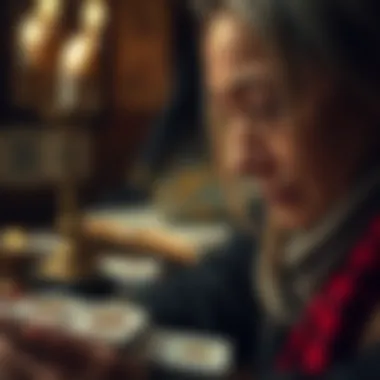
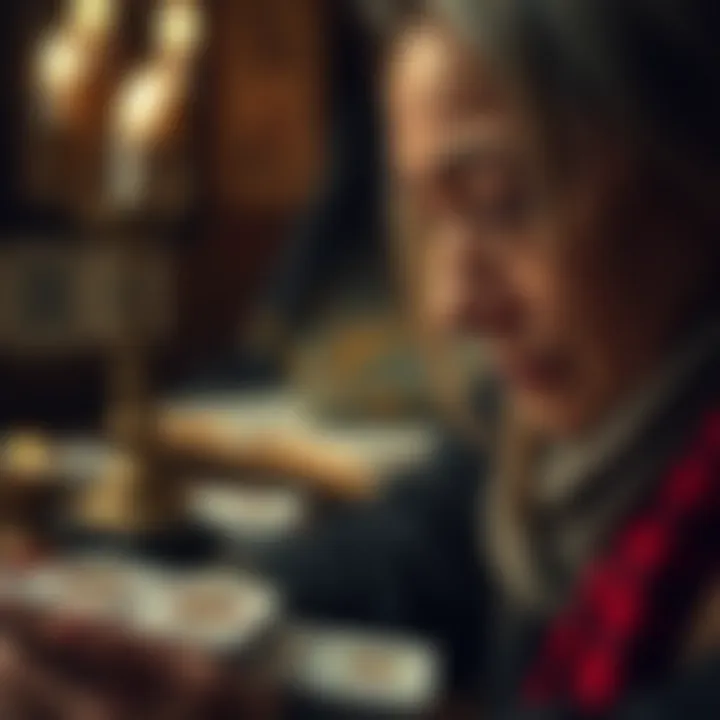
In the dynamic realm of tarot card reading, a foundational understanding of mechanics and interpretation is essential. It’s not just about the cards; it’s about the intricate web of meaning, intuition, and tradition that shapes each reading. For those intrigued by this practice in New York City, grasping these elements can elevate the experience from mere curiosity to profound insight.
The Structure of Tarot Decks
A standard tarot deck consists of 78 cards, divided into two main categories: the Major Arcana and the Minor Arcana. The Major Arcana, featuring 22 cards, encapsulates significant life themes and spiritual lessons. These cards signal pivotal moments and are usually the focus in a reading, indicating deep, impactful influences on one’s life path.
On the other hand, the Minor Arcana comprises 56 cards that delve into the day-to-day aspects of life. This section is further divided into four suits: Wands, Cups, Swords, and Pentacles. Each suit reflects different facets of experiences and emotions.
- Wands often relate to action and creativity.
- Cups correspond to emotions and relationships.
- Swords represent intellect and conflict.
- Pentacles deal with material aspects and practicality.
Understanding this structure not only enhances the interpretation of individual cards but also aids in recognizing how they interact during a reading.
Symbolism and Card Meanings
Each tarot card is rich with symbolism and invites deep contemplation. From the vivid imagery to the colors and figures depicted, every detail possesses significance. For instance, The Fool, often viewed as a harbinger of new beginnings, embodies spontaneity and adventure, urging one to take risks. Conversely, The Tower symbolizes upheaval and sudden change, representing the breaking down of old structures to allow for new growth.
This symbolic language transcends mere divination; it serves as a mirror reflecting inner truths and societal influences. Each tarot reader interprets these symbols differently, influenced by personal intuition and understanding of the querent’s situation.
The Reading Process
The reading process itself is where mechanics and intuition converge. Generally, a tarot reading begins by asking the querent to focus on a specific question or intention. The reader then shuffles and lays out the cards, often in a spread that can vary widely—from three-card spreads that represent the past, present, and future to more intricate layouts like the Celtic Cross.
As the cards are revealed, the reader engages in a dialogue, interpreting the cards’ positions and relationships to one another. Each card's meaning shifts based on not only its position in the spread but also its connections to surrounding cards. The purpose is not merely divination but fostering deeper self-awareness through a conversation with the symbols.
"Tarot reading is not just prediction but a means of understanding oneself within the larger tapestry of life."
In the context of New York City's diverse tarot landscape, these mechanics come alive in numerous ways. Readers may combine traditional techniques with influences from psychology, spirituality, and even storytelling, crafting unique experiences that resonate with a myriad of querents. By appreciating these mechanics, both readers and seekers can unlock deeper layers of meaning, ultimately enhancing the tarot experience.
Cultural Significance of Tarot in Modern Society
Tarot has found a unique niche in the fabric of modern society, making waves far beyond simple fortune-telling. The roots of tarot are steeped in symbolism and introspection, and in urban landscapes like New York City, this ancient practice intersects with contemporary issues. People turn to tarot not just for predictions or insights into their destinies, but often as a means of self-reflection, navigating complex emotions and life choices. Here’s why it matters today.
Tarot as a Tool for Self-Reflection
In an age where individuals are often bogged down by continuous connectivity and societal pressures, tarot can serve as a mirror—a window into one’s inner world. The experience of a tarot reading is often likened to diving into the depths of one’s psyche. When someone sits down for a reading, they are not merely seeking to know what’s next; they are engaging in a dialogue with themselves. The cards act as catalysts, sparking thoughts, feelings, and realizations that may have been tucked away in the corners of the mind.
- For many, the process involves a combination of the following elements:
- Introspection: Individuals reflect on their current state, which may lead to breakthroughs regarding their emotional wellbeing.
- Validation: Especially in moments of uncertainty, drawing cards can validate feelings and intuitions, providing reassurance that one’s thoughts are grounded in something real.
- Clarity: The frequently intricate symbolism of the cards allows the reader to frame their dilemmas, breaking down complex ideas into manageable insights.
Simply put, tarot facilitates an enlightening conversation with oneself—a far cry from the age-old stigma of being merely mystical or superstitious.
Tarot in Popular Culture
As tarot continues to gain traction, it plays a pivotal role in various forms of popular culture. What’s intriguing is how tarot has seamlessly integrated into the fabric of modern storytelling, fashion, and social media.
- Books and Movies: Titles like The Tarot Reader’s Handbook often blossom in the literary scene, while films like The Craft introduce the cards to audiences in unique ways. This influence extends into series like Chilling Adventures of Sabrina, where tarot readings hold significant narrative weight.
- Social Media Trends: Platforms like Instagram and TikTok have given rise to tarot communities where enthusiasts share snippets of their readings or interpretations. The visual and engaging nature of these platforms helps demystify tarot, placing it firmly in the public eye.
- Fashion: Unique designs on tarot-themed merchandise—be it clothing, jewelry, or decor—reflect a broader acceptance and fascination with tarot culture.
The collective absorption of tarot into popular culture signifies a deeper yearning for connection, exploration, and understanding in a fast-paced world.
Tarot is no longer confined to dimly lit rooms; it has emerged as a social phenomenon, bridging the old with the new.
As urbanites stroll through the vibrant streets of NYC, the cultural significance of tarot becomes a touchstone for many, representing a blend of wisdom from the past with the vibrancy of the present. Through tarot, individuals not only explore their psyche and personal paths but also engage with a community that values emotional insight and artistic expression.
Finding a Tarot Reader: Practical Considerations
Navigating the labyrinth of tarot readings in New York City involves more than just flipping cards; it requires a discerning eye and a clear understanding of what to expect. This section serves not just as a how-to guide but as a compass to help enthusiasts, especially those intertwined with gambling cultures, find their ideal tarot reader. The right practitioner can unveil insights you may never have considered, enhancing personal growth or even informing critical decisions regarding risk and reward.
What to Look for in a Reader
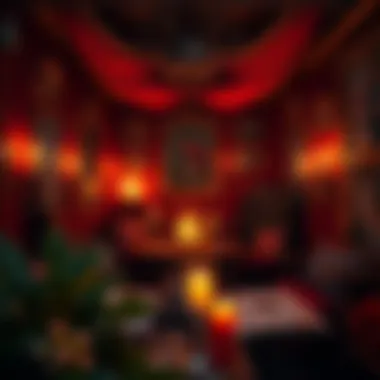
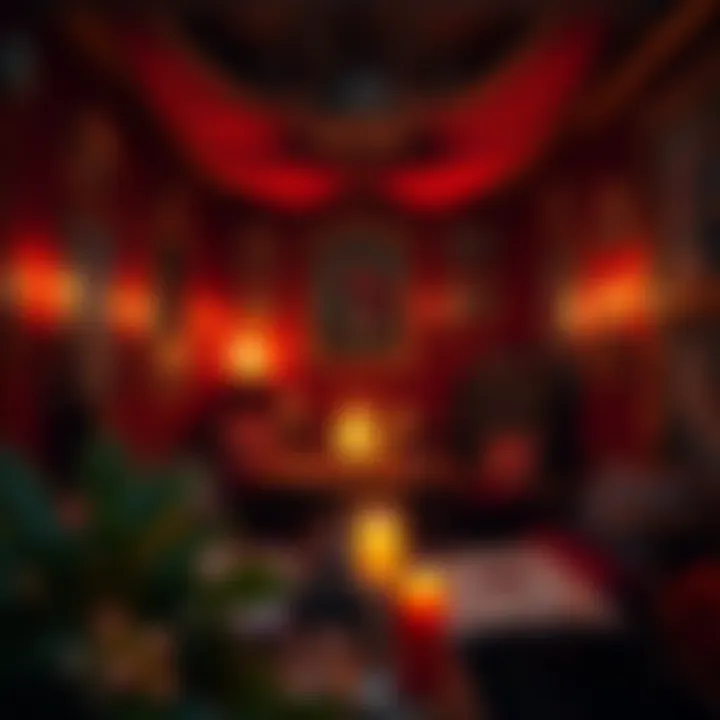
When searching for a tarot reader, the initial step is often establishing what resonates with you personally. Not every reader stands the same; their unique vibes, styles, and approaches can greatly influence the experience:
- Intuition and Empathy: The most adept readers possess a keen sense of empathy along with sharp intuitive abilities. While technical knowledge of the cards is important, the heart of a good reading lies in the connection formed between the reader and the querent.
- Alignment with Your Needs: Some practitioners emphasize predictive outcomes, while others focus on self-reflection or healing. Knowing what you are seeking can save both time and emotion.
- Style of Reading: The method varies; some may utilize spread techniques, while others dive into a more freeform style. Finding a reader whose method aligns with your preferences is vital.
- Reviews and Recommendations: Word of mouth can be invaluable. Recommendations from friends who have had successful readings can lead you toward a trustworthy reader. Online reviews on platforms like Yelp and Facebook can also provide insight into a reader's reliability and skill set.
In essence, it’s about feeling comfortable and secure in your choice.
Evaluating Credentials and Experience
A reader’s credentials may often be the unspoken metric that influences your choice. Evaluating them can shed light on their proficiency and approach:
- Training and Certification: While not mandatory, training can shape a reader's foundational knowledge. Some tarot readers pursue formal education or certification from respected institutions, offering you a level of assurance about their skill.
- Years of Practice: Experience can play a crucial role in a reader’s insight. Those who have honed their craft over years may have encountered various scenarios, providing more breadth in their readings.
- Specialization: Certain readers may specialize in focused areas such as career guidance, relationships, or financial foresight. Identifying a reader's niche can guide you toward better-aligned expertise for your particular situation.
- Ethical Practices: Ethical considerations cannot be overlooked. Responsible tarot practitioners prioritize the well-being of their clients, providing honest insights while respecting boundaries.
"Selecting a tarot reader requires as much intuition as the reading itself. Approach it with an open heart and mind."
In the ever-evolving landscape of tarot in NYC, the road to finding the right reader is just as contingent upon understanding your needs as it is upon recognizing the reader's qualifications. Be thorough in your exploration, as the individual you choose could very well influence pivotal moments in your life.
The Intersection of Tarot and Betting Culture
The connection between tarot card reading and the world of betting is often overlooked, yet it presents a fascinating angle for exploring themes of chance and human psychology. Both practices tap into the human desire to predict the unknown—with tarot providing insight into life’s uncertainties and gambling revealing the inherent risks we face in our daily decisions. This intersection is pivotal in understanding why individuals are drawn to tarot in environments where chance rules.
Tarot reading, in a way, becomes a form of wagering against one’s fate. While tarot card readers may not hold the same allure as the flashing lights of a casino, the emotional stakes can be just as high. A reading can instill hope, fear, or anticipation. The correlation between betting and tarot brings forth several elements worth examining.
Significance of the Intersection:
- Probabilities and Predictions: Both gambling and tarot hinge on the uncertain outcomes of events. A tarot card may foretell beneficial or adverse circumstances, reminiscent of calculating odds in poker.
- Personal Agency: Players in both realms often crave control over their destinies. Tarot can provide a shortcut to understanding one's life path, mirroring strategic thinking in high-stakes games.
- Psychological Comfort: Engaging with tarot can offer emotional perspectives during uncertain times, akin to the rush gamblers feel in testing their luck.
Embracing tarot in the sphere of betting culture also raises important considerations about players' motivations and the psychological implications at play.
Chance and Interpretation
Chance governs both tarot and betting, creating an intricate dance between fate and free will. Some tarot enthusiasts passionately assert that the cards are mirrors reflecting one’s inner landscape rather than concrete predictors of future events. This philosophical perspective sees the reading as an interpretative exercise, driven by the querent’s thoughts and emotions.
Like betting, where odds fluctuate, tarot readings are subject to interpretation. Cards can vary in meaning based on the spread, the question posed, and the individual’s context. A set of cards can signify myriad outcomes; it’s the reader's job—and the querent’s—as they deconstruct the layers of meaning. Ultimately, this intertwines with the broader landscape of betting culture, where interpretations of odds can influence decisions.
Instead of a straightforward prediction, tarot offers insight into probabilities of potential futures, leading the querent to reflect and consider their choices.
"The tarot is a card game like any other where psychic chance reveals insight, giving the players a chance to change the game in their favor."
This fluid nature of chance in tarot creates an engaging experience for those who often revel in the thrill of uncertainty.
Psychological Insights in Gambling and Tarot
Examining the psychological frameworks behind gambling and tarot can unveil some common threads. Dysfunctional gambling and a casual tarot reading share similar neural pathways. Studies suggest that both behaviors trigger the brain’s reward system, creating a cycle of anticipation and satisfaction.
- Cognitive Dissonance: Both practices can lead to emotional highs and lows. Gamblers may rationalize losses as necessary risks while tarot users often grapple with their interpretations, sorting through what feels right or wrong.
- Decision Making under Uncertainty: Engaging with tarot can often empower individuals to make choices with more clarity. When faced with decisive moments, a reading can clarify a path forward, akin to weighing the odds in poker.
- Rituals of Comfort: Just as rituals in gambling, like shuffling cards or using lucky charms, add layers of meaning, tarot readings can serve as rituals that ground individuals during turbulent times.
Understanding these shared psychological entanglements adds depth to our exploration of tarot’s role within betting culture. Through both lenses, tarot invites consideration on how we perceive risk, interpret signs, and look to shape our futures—an elegant synthesis of chance and choice.
Challenges and Criticisms of Tarot Reading
The realm of tarot reading isn't all sunflowers and rainbows; it's got its fair share of shadows too. Dissecting the challenges and criticisms surrounding tarot helps paint a fuller picture of how it operates, especially in a vibrant metropolis like New York City. Tarrot isn't merely about fortune telling—it's interwoven with complex cultural narratives, psychological dimensions, and a substantial amount of skepticism. Recognizing these issues is crucial for those contemplating a reading, for they can gather valuable insight and arm themselves with knowledge as they traverse their tarot journey.
Skepticism Around Tarot
Skepticism toward tarot reading often comes from a place of doubt regarding its efficacy and legitimacy. Many view tarot as little more than a quaint pastime, perhaps even a form of entertainment rather than a serious activity. The flak comes from various angles, such as the belief that tarot cards merely reflect the reader's biases or that the interpretations are overly subjective.
Often, skeptics point to scientific views, suggesting that there isn’t enough empirical evidence to support the claim that tarot can accurately predict events or unveil hidden truths. Some argue that the relationships established during readings are merely coincidental, akin to a parlor trick. However, those who engage deeply with tarot often argue that it is less about prediction and more about introspection, prompting its users to ponder life’s complexities.
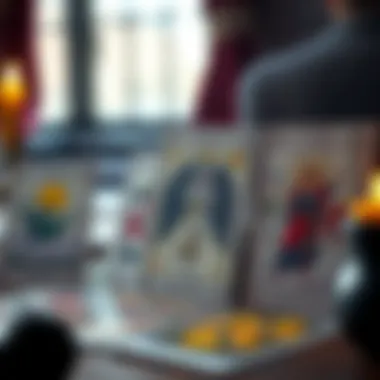
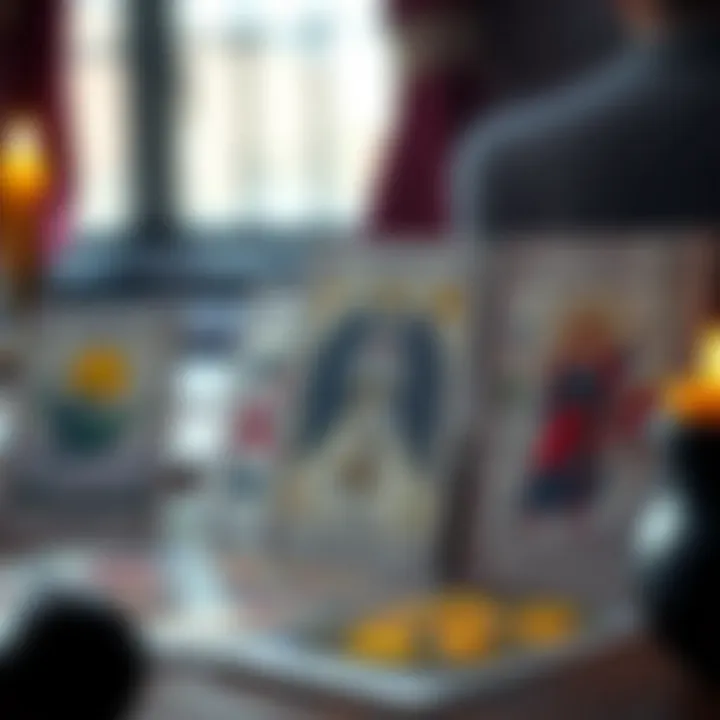
For instance, while one person might not find a reading particularly enlightening, another might experience an epiphany that influences their life choices significantly. It’s essential to navigate these differing perspectives carefully, understanding that skepticism, while predominant, exists alongside a vast network of meaningful experiences that many have had with tarot.
Commercialization of Tarot Services
Over the years, there's been a noticeable shift in how tarot reading is marketed and consumed. Gone are the days when reading a tarot deck was often regarded as a more intimate, personal experience. Nowadays, it’s not uncommon to find tarot services commodified, often reduced to a quick, cash-grab consultation.
This commercialized approach can strip the practice of its depth. When transactional elements overshadow the personal connections that cultivate meaningful readings, it raises eyebrows among purists within the tarot community. Some tarot readers feel the pressure to offer trendy gimmicks or follow commercial strategies to attract clients, which can dilute authentic connections.
Moreover, the rise of “tarot for everyone” discourses might inadvertently sidestep vital teachings that seasoned readers consider essential—such as understanding card symbolism, and the influence of intuition, and the importance of setting the right atmosphere for a reading. This can lead to a superficial understanding of tarot, which does both the practitioners and the seekers a disservice.
In short, while commercialization can make tarot more accessible to a broader audience, it also poses challenges. Potential clients need to sift through glitzy advertisements and flashy websites, seeking practitioners who still emphasize depth, authenticity, and the original spirit of tarot.
"Without a critical eye, one may lose the richness of traditional insights which have guided practitioners for decades."
The landscape of tarot in NYC is as dynamic as the city itself. Acknowledging its challenges and criticisms allows seekers to approach tarot with an informed mindset, ready to parse through the buzz and hone in on what truly resonates with them.
Case Studies: Tarot Readings in Real Life
Diving into case studies of tarot readings provides a fascinating lens to understand its impact on people’s lives. These sessions—often laden with emotional weight—help demystify how individuals interpret their circumstances, offering valuable insights into human behavior. Beyond mere card interpretation, noteworthy sessions reveal how tarot can serve as a mirror for personal choices, illuminating paths that might otherwise go unseen.
Profiles of Noteworthy Sessions
One notable profile focuses on Sarah, an aspiring artist, who sought guidance during a particularly tumultuous period.
- Background: Sarah felt her creative juices had dried up. In her NYC apartment, surrounded by half-finished canvases, she decided to consult a tarot reader known for her intuition and analogies rooted in everyday life.
- Session Details: During the session, the reader drew the Three of Cups, symbolizing creative collaboration. Insightfully, the reader described how Sarah’s isolation from her peers was stifling her creativity, urging her to tap into community sources for inspiration.
- Outcome: Following the reading, Sarah joined a local artist group, rekindling her inspiration and leading to a successful exhibition. The Three of Cups transformed from mere symbolism into a foundational experience, proving how tarot can catalyze real-world change.
Similarly, consider Jason, a business professional seeking clarity before entering a risky investment.
- Background: Jason was wrestling with uncertainty around a start-up venture that promised big rewards but came with its fair share of risks.
- Session Details: In this reading, the Wheel of Fortune appeared, suggesting cycles of change and the necessity of being adaptable. The reader skillfully connected the card’s themes with Jason's need to remain open to different outcomes, emphasizing that intuition must guide his actions.
- Outcome: Armed with a new perspective, Jason decided not just to invest financially but also to engage his networks, ultimately leading to a more informed decision about the venture.
Impact of Readings on Personal Decisions
The impact of tarot readings on personal decisions can be profound. When individuals approach tarot, they often come with questions, concerns, or crossroads in life. This engaging process enables them to reflect on their situations in new ways.
- Clarity and Direction: Many report having a clearer sense of direction post-reading. Tarot acts as a facilitator for rationalizing thoughts and feelings—transforming anxiety into actionable steps.
- Reinforcement of Intuition: Such sessions can also reaffirm what was perhaps an inkling in the back of one’s mind. For example, if a reading highlights a need for change, it might encourage someone to act on long-held desires.
- Broader Perspectives: Final significant point is the encouragement to look at issues from various angles. Tarot readers bring fresh interpretations that can lead to surprising realizations. The process of interpreting symbols and messages fosters a deeper understanding of oneself, making often overlooked aspects of life come to the forefront.
"Tarot acts as a roadmap, not dictating the future but showing potential paths to consider."
In NYC, where life can feel fast-paced and overwhelming, the blend of intuition, insight, and experience observed in tarot readings serves as a compass for many navigating their personal and professional lives. The testimonials and case studies revealed underscore the need for such reflective practices in an increasingly complex world.
Future Trends in Tarot Practices
As the world continues to shift and change, so does the realm of tarot reading. This section delves into the future trends in tarot practices, exploring how technological advancements and evolving cultural narratives are shaping the experiences for both readers and seekers in New York City. Understanding these trends is essential for those interested in tarot, as they reveal the ways in which ancient practices are adapting to modern needs and preferences.
Digital Transformation in Tarot Readings
In the age of technology, tarot reading isn't confined to dimly lit rooms or eclectic storefronts any longer. Instead, the digital realm is transforming how readings are performed and accessed. Virtual tarot sessions via platforms like Zoom or Skype have surged in popularity, allowing readers and clients to connect without geographical limitations. This evolution caters especially to a generation that is comfortable with online communication, providing a sense of accessibility that wasn’t previously possible.
Advantages of digital tarot include:
- Accessibility: Individuals from different backgrounds can easily find and connect with various readers, each with their unique styles, from the comfort of their homes.
- Diverse Offerings: Online platforms often host events, workshops, and even courses for budding readers, facilitating an expansive learning ecosystem.
- Affordable Options: Generally, online readings come at a variety of price points, giving seekers a range of choices according to their budget.
However, some purists argue that the tactile experience — shuffling the cards, feeling the energy in the room — can be lost when readings occur online. It's important for both readers and clients to navigate these waters thoughtfully. Online ratings and reviews can serve as a guideline for selecting credible tarot advisors.
Emerging Voices in the Tarot Community
As tarot reading continues to blossom, new voices are rising within the community. These practitioners often emphasize authenticity, personal narratives, and cultural relevance in their readings. Emerging voices bring unique backgrounds and perspectives that enrich the tarot landscape in NYC, gradually replacing more traditional narratives that dominated in the past. For instance, many contemporary readers are embracing discussions around mental health and wellness, using tarot as a stepping stone into deeper conversations about emotional resilience and personal growth.
Factors contributing to this shift include:
- Cultural Sensitivity: Newer tarot readers are sensitive to the diverse identities and experiences of their clients, which fosters a more inclusive environment.
- Personal Storytelling: These practitioners actively weave their personal narratives into their sessions, making connections more profound and relatable.
- Community Engagement: Emerging tarot voices often participate in events that emphasize community building, such as public readings, tarot fairs, and workshops, thus reinvigorating interest in the practice.
"Tarot is not just about reading cards; it’s about sharing stories and experiences that resonate with each individual."
As these trends unfold, it's clear that tarot reading in NYC is poised for an exciting evolution. The synchronicity between modern technology and the rich historical roots of tarot forges a path toward innovative practices that maintain significance while opening doors to a wider audience. Engaging with these emerging trends, both readers and clients can enrich their journeys through this ancient art form.










